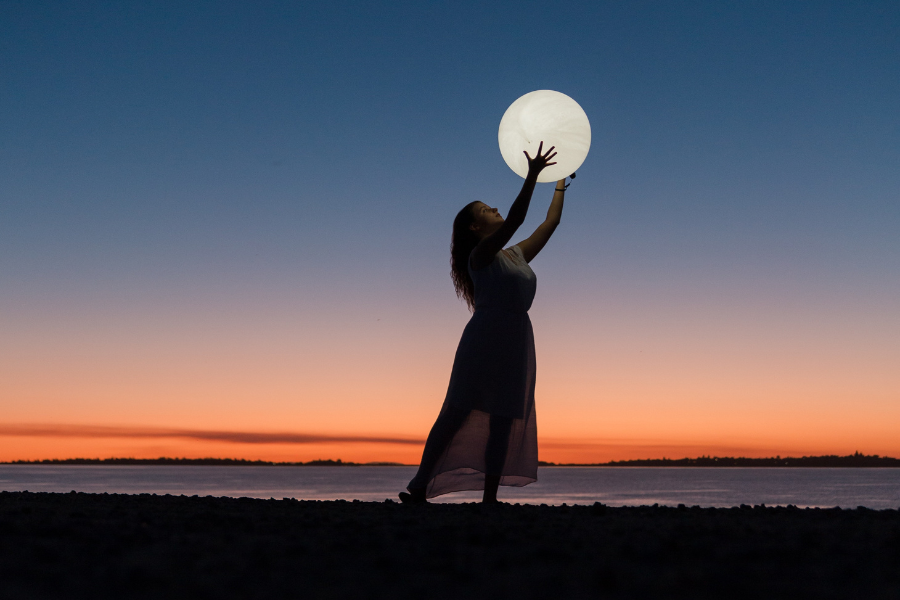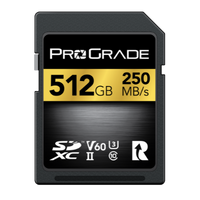As photographers, we all strive to capture images that are not only visually stunning but also unique and captivating. However, in a sea of shutterbugs, it can be challenging to come up with original ideas that truly set your work apart. It’s easy to fall into the trap of producing the same types of images over and over again, ultimately stifling your creativity and limiting your potential. That’s where the magic of the new comes in.
At ProGrade Digital, we understand the importance of staying on the cutting edge. We’re passionate about providing you with the latest tools and equipment to help unleash your creativity and push the boundaries of what’s possible. That’s why we’re thrilled to share some insider tips and tricks on unlocking your potential as a photographer and coming up with truly original ideas.
So, whether you’re a seasoned pro or just starting out, these strategies will help you break out of creative ruts and take your photography to the next level. So buckle up and get ready to explore 5 ways to come up with original ideas for photography.
1. Mindfulness and Self-Reflection: A Key to Hidden Side of Your Creativity
For many, practicing mindfulness and self-reflection falls into the category of spirituality or therapeutic treatment. It is associated with reducing stress and relaxing the body and mind. So most steer clear of it and never realize that mindfulness is also a powerful tool to tap into your own creativity.
Mindfulness is the practice of being fully present in the moment, with a non-judgmental awareness of your thoughts, feelings, and surroundings. It allows you to connect with your environment in a deeper and more meaningful way, enabling you to see the world around you with fresh eyes.
To start incorporating mindfulness into your photography practice, begin by setting aside a few minutes each day to sit quietly and focus on your breath. This can be as simple as finding a comfortable seat, closing your eyes, and bringing your attention to the sensation of your breath moving in and out of your body.
As you begin to cultivate a daily mindfulness practice, you’ll start to notice the ways in which your mind wanders and how you can bring it back to the present moment. This practice of awareness and attention can be especially useful when you’re out shooting, as it allows you to be fully present and notice the details of your surroundings.
Try to let go of any distractions or preconceived ideas about what you want to capture, and allow yourself to be open to the unexpected. Take a few moments to pause and observe your surroundings. Pay attention to the light, colors, textures, and shapes around you and how they interact with each other.
As you continue to cultivate mindfulness in your photography practice, you’ll likely find that your work becomes more intentional, focused, and expressive. You’ll begin to notice subtle details that you may have overlooked before, and your ability to capture the essence of a moment or scene will improve.
Once you’ve established a daily mindfulness practice, begin incorporating self-reflection into your routine. After a shoot, take some time to review your images and reflect on what you were thinking and feeling during the shoot. Ask yourself what inspired you to take each photo, what emotions you were experiencing, and how you might be able to express these inner experiences through your work.
Another way to incorporate mindfulness and self-reflection and develop creative ideas is by setting intentions before a shoot. Take a few moments to contemplate what you hope to achieve during the shoot and how you want your images to convey your inner experiences. Focus on the emotions you want to capture and how you can use your technical skills to express these emotions in a visually compelling way.
Developing a regular mindfulness and self-reflection practice can help you discover unique sides of your creativity. It gives you a greater understanding of your own thoughts, emotions, and perceptions. By incorporating these practices into your daily routine, you’ll be able to approach your photography with an ampler sense of intention and purpose and create images that express your unique perspective and vision.
2. Breaking Out of Your Comfort Zone: How Exploring New Subject Matter Can Help You Create Original Images
For us humans, it is easy to fall into the trap of sticking to what is comfortable and familiar. After all, familiar is safe. At least we know how to navigate it safely. Unknown, on the other hand, may possess hidden dangers. That’s why breaking out of our comfort zone is hard. It goes against our natural survival instincts. That said, as an artist, it’s essential to take risks and try new things.
Staying in your comfort zone can be limiting and detrimental to your growth as a photographer. It can cause you to become complacent, relying on the same techniques and ideas. This can make your work predictable and unoriginal, failing to capture viewers’ attention.
By exploring new subject matter, you can develop new skills and techniques that you may not have considered before. This can help you to grow as an artist and create work that is fresh, exciting, and unique. It will expand your creative horizons and open new avenues for your artistic expression.
Exploring new subject matter can expose you to different perspectives, cultures, and ways of seeing the world. This can lead you to develop your own voice as a photographer, giving you a unique perspective that sets you apart from others in your field and leads you to new original ideas.
3. The Power of Experimentation: How Trying New Techniques Can Fuel Your Creativity
Remember, there is no right or wrong way to approach photography. Let that fact bolden your self-confidence and guide you toward courageous experimentation.
Embracing experimentation allows you to break the rules of photography and find your own style. Trying out new techniques can push your boundaries and unlock hidden potential in your work. So, challenge yourself to do things differently and see where your experimentation takes you.
Try unconventional lighting, and test different light sources, such as lamps or colored gels. Play with post-processing, and use diverse editing techniques in post-processing, such as split toning or selective color. The possibilities are endless!
Another way to experiment is to collaborate with other artists or creatives. For example, seek opportunities to work with models, makeup artists, stylists, or other photographers with different perspectives and approaches to their craft. This can inspire you to try new techniques and unlock your full creative potential.
4. Finding Inspiration Everywhere: How to Let the World Around You Fuel Your Creativity
Take a walk in nature and observe the way the light falls on the leaves or the way the colors of the sky change as the sun sets. Explore your city or town and take notice of the architecture, the people, natural and man-made patterns, and street art. Each new place offers a fresh perspective that can spark your creativity.
Remember, finding inspiration isn’t just about looking for the perfect shot. It’s about opening yourself up to new experiences, connecting with your surroundings, and seeing the world through a different lens. So go out there and explore with an open mind.
But inspiration isn’t just found in the external world. Your own experiences, emotions, and memories can also fuel your creativity. Professional photographers, excellent at their craft, often think about the moments in their life that have profoundly impacted them and consider how they can capture those feelings in their photography.
5. The Gear You Need: Why Investing in New Equipment Can Take Your photography to the next level
Just as a painter needs their brushes and canvas, you need your camera and lenses. New gear can take your photography to a level you never thought possible. Whether you’re a beginner or a seasoned pro, upgrading your gear will make a significant difference not only in the quality of your photos but also in creative possibilities.
Investing in new equipment can give you access to new features that you may not have had before. For example, if you’ve been shooting with an older camera, upgrading to a newer model can bring you better autofocus, faster shutter speeds, and higher resolution. These features can significantly enhance the quality of your photos and allow you to capture moments you may have missed before.
Likewise, new equipment can open up new perspectives. Investing in different lenses, for example, can give you a range of fresh viewpoints and allow you to experiment with different types of photography. Similarly, investing in new lighting equipment enables you to experiment with different lighting setups and shoot more dynamic and exciting photos.
Oftentimes, it’s the minor details that make the most significant difference. Memory cards are a great example. At first glance, all they seem to do is store your images. The reality, however, is entirely different. Memory cards vary wildly in their capabilities, much like any other technology.
Take a look at the following chart about alpha 7S III camera media card requirements issued by the Sony corporation, and you will see that the most advanced features are only available to those using the fastest memory cards. In this case, SDXC V90 and CFexpress Type A memory cards.

True, the above table is more relevant to videographers, and photographers can generally get away with SDXC V60 memory cards equally well. Still, anything below that may already start limiting your camera’s max burst speed and other important features.
Besides the capacity and speed, there are other essential features to look for when upgrading your memory cards. ProGrade Digital memory cards, for example, consume less power, hence extending your camera’s battery life when shooting. They are also Refresh Pro compatible, which allows you to sanitize your cards to get them back to their factory-fresh condition and perform at their best, even after years of use.
Overall, what’s the point of spending a lot of money on a camera and lenses to get all these advanced features only to limit your expensive equipment and your creative potential with a cheap, consumer-grade memory card?
How to Come Up With Original Ideas for Photography: Final Words
Photography is an art form that is deeply rooted in observation and perception. As a photographer, the ability to see and capture the world in unique and meaningful ways is crucial to creating compelling and impactful images. As you embark on your journey to discovering original ideas for photography, remember that the possibilities are truly endless. The world is your canvas; your camera is your tool to capture its infinite beauty. So take a deep breath and step outside your comfort zone – challenge yourself to experiment with different techniques, locations, and subjects. Embrace the unexpected and let yourself be inspired by the world around you.
Think about your personal experiences and passions, and let them guide your creative process. Don’t be afraid to collaborate with others or seek out new perspectives – you never know what incredible ideas might emerge from the exchange of ideas. With persistence, patience, and an open mind, you can develop a truly unique photographic style that reflects your individuality and creativity.
So go ahead, immerse yourself in the beauty of the world, and let your imagination run wild. Every moment is an opportunity to capture something magical, something that has never been seen before. You have the power to create and inspire with your photography, so seize the moment and unleash your full potential. The world is waiting to be discovered through your lens.





